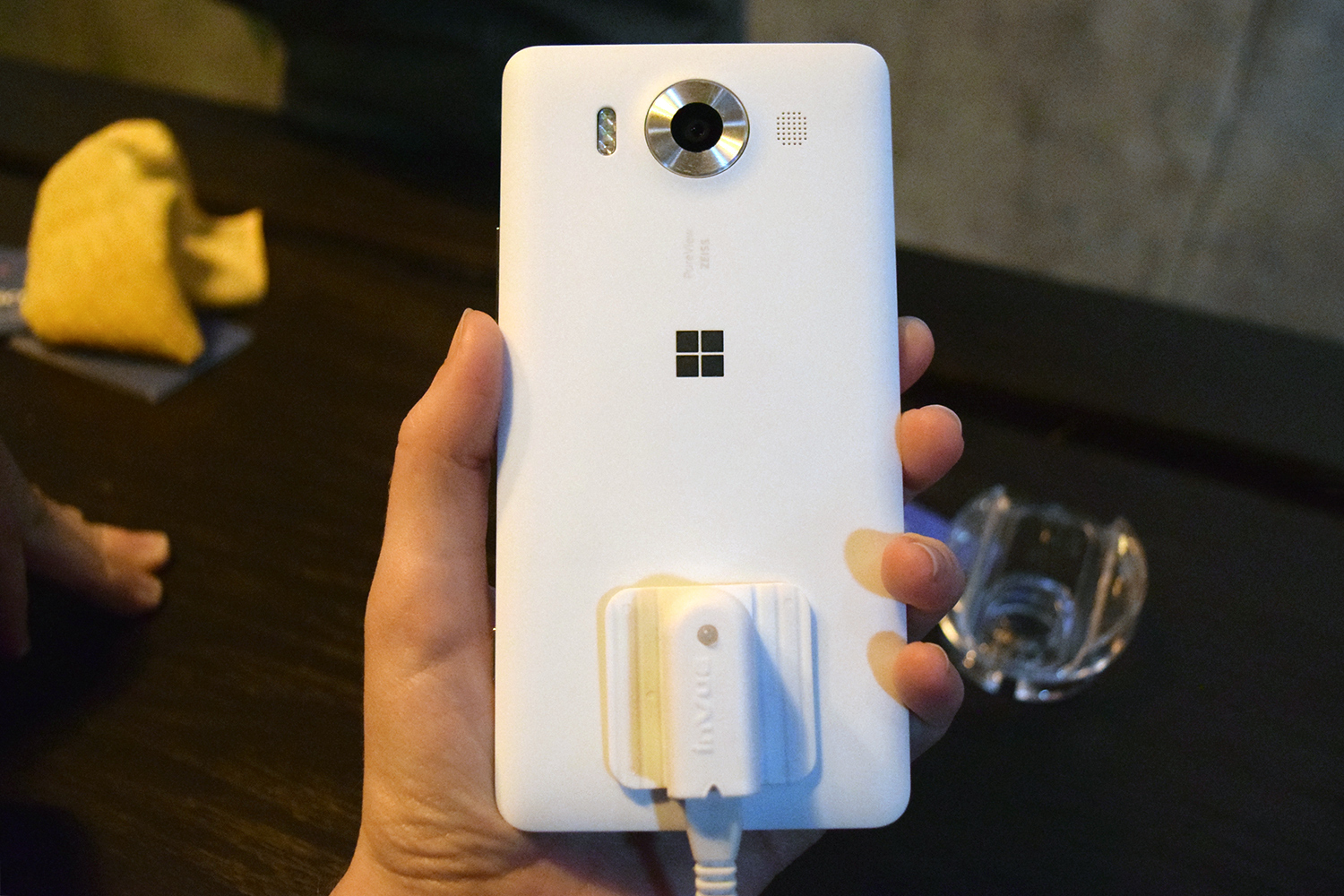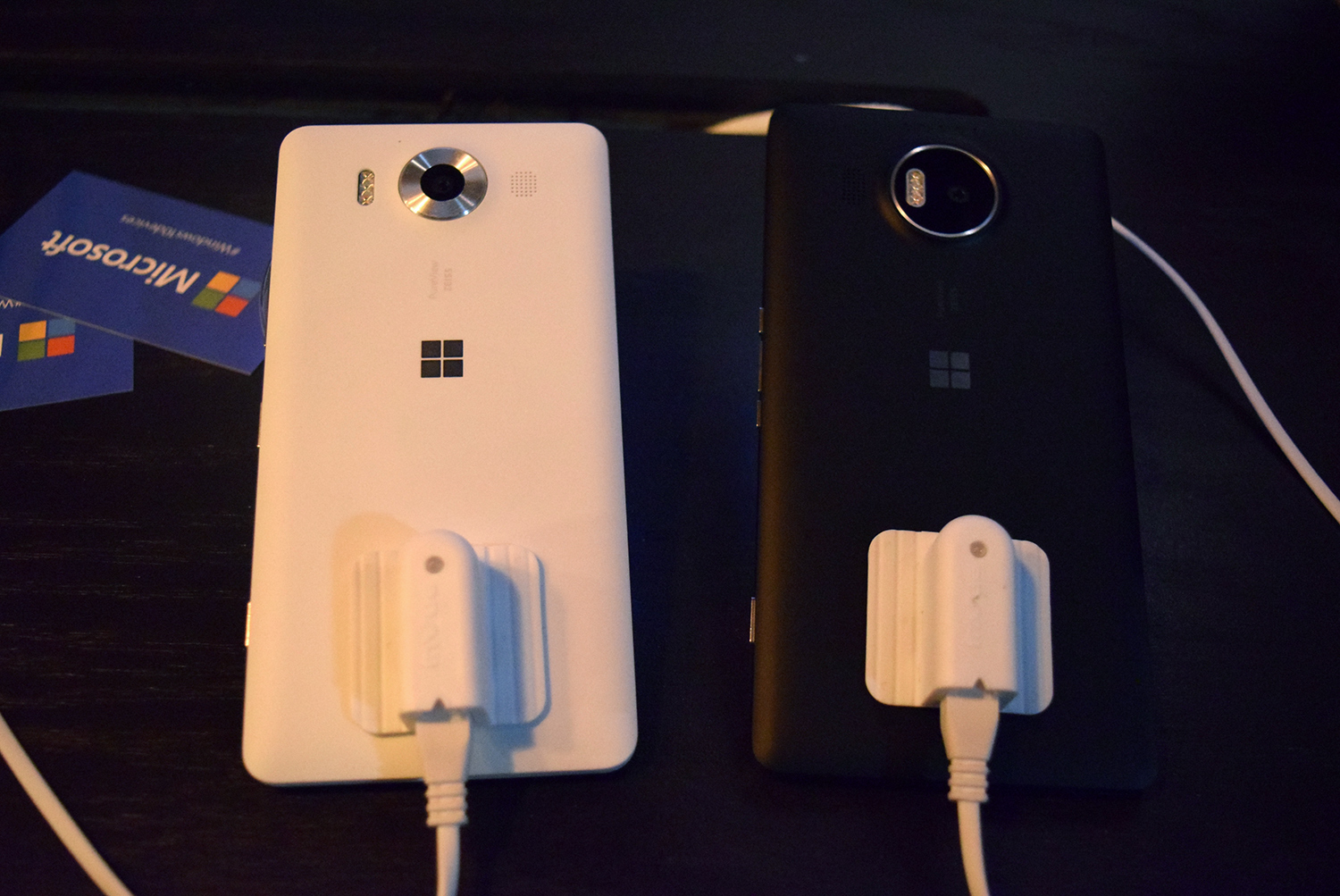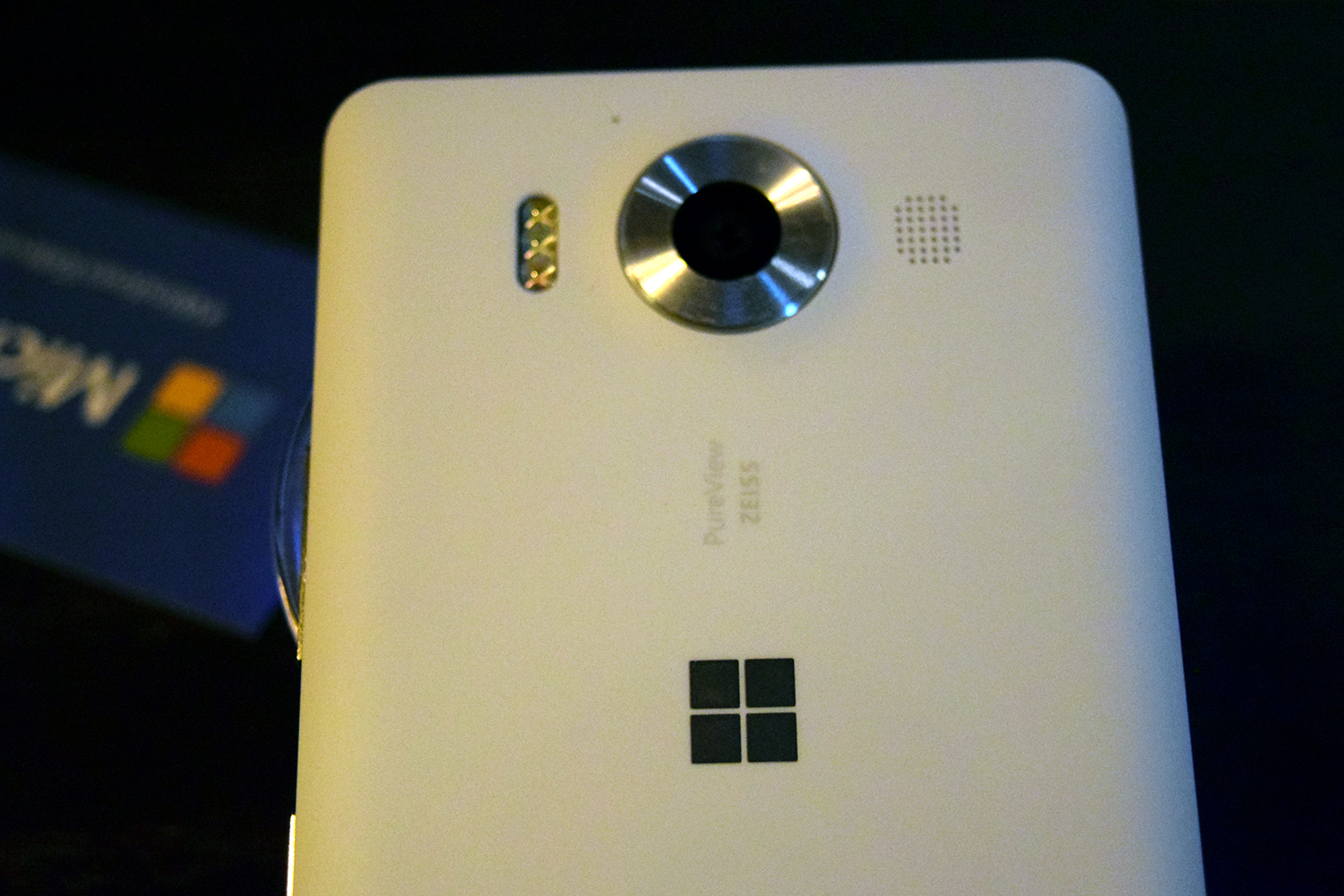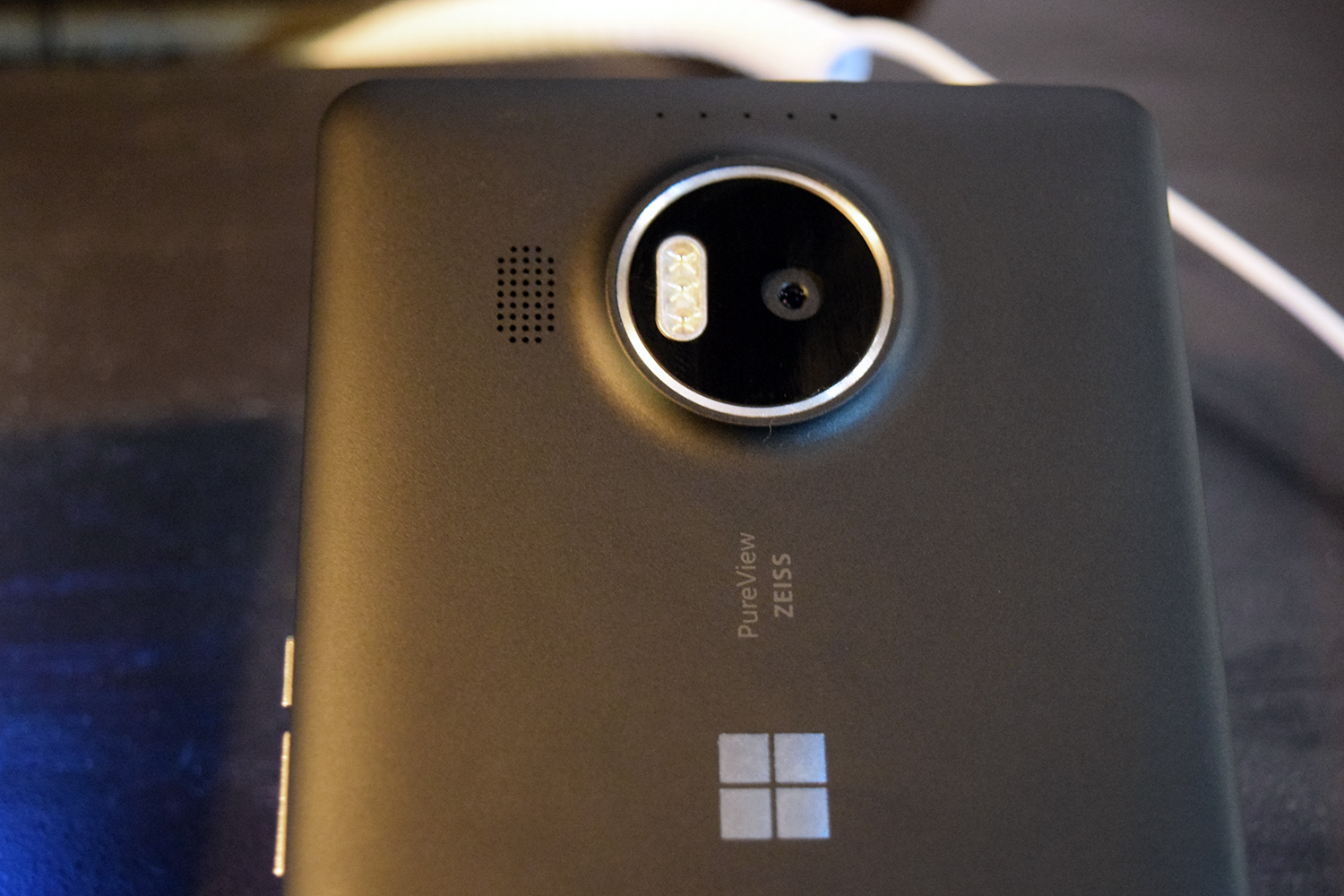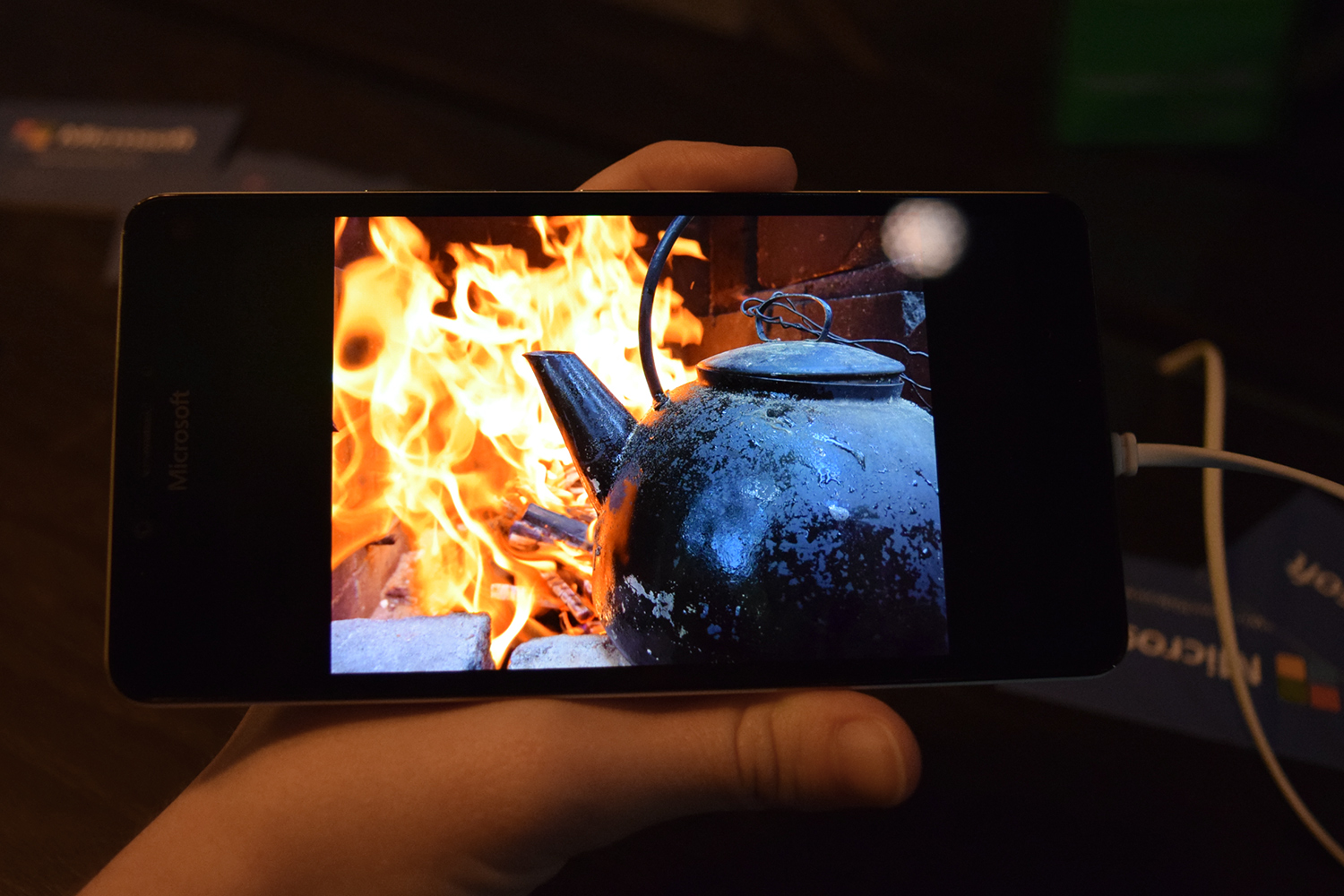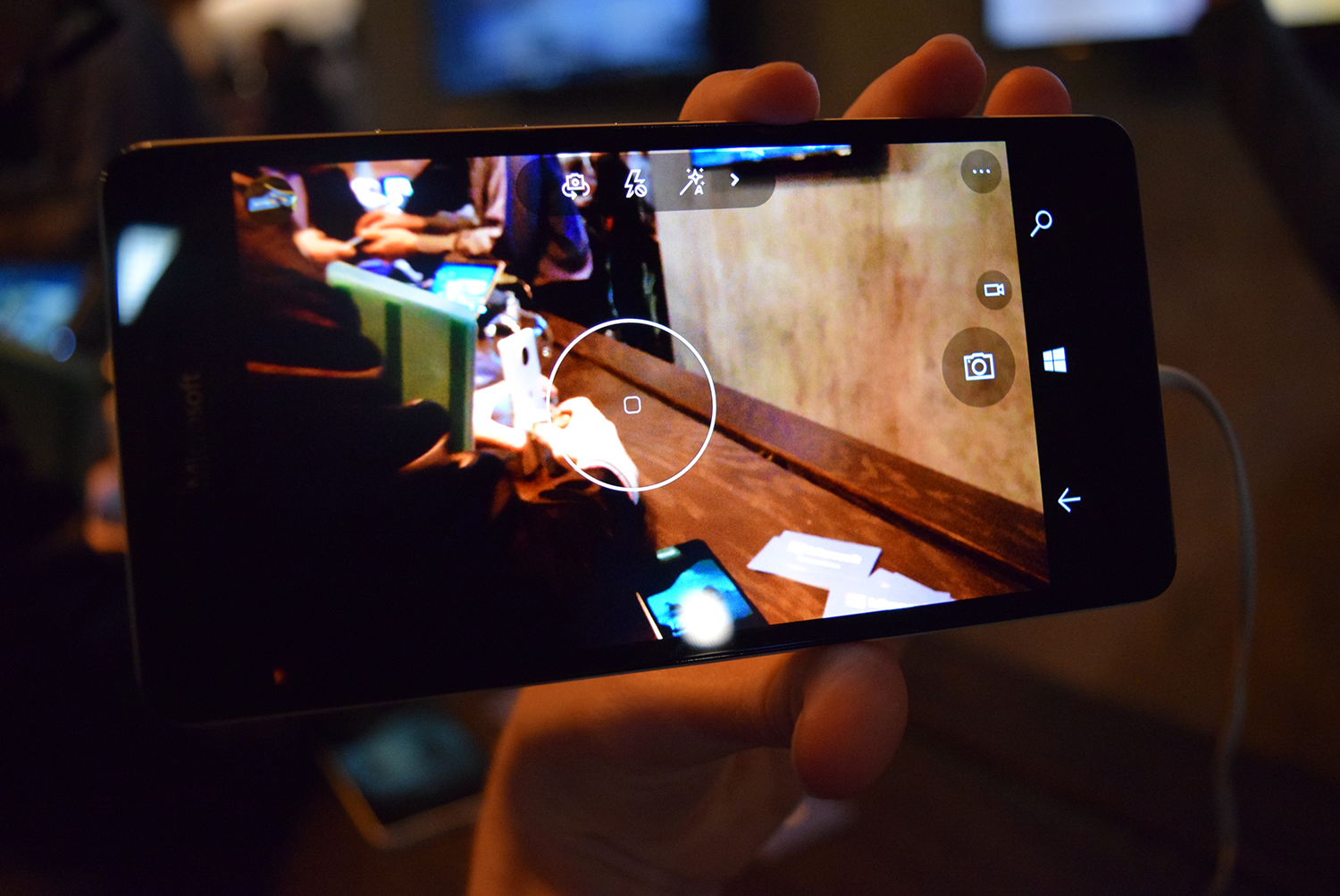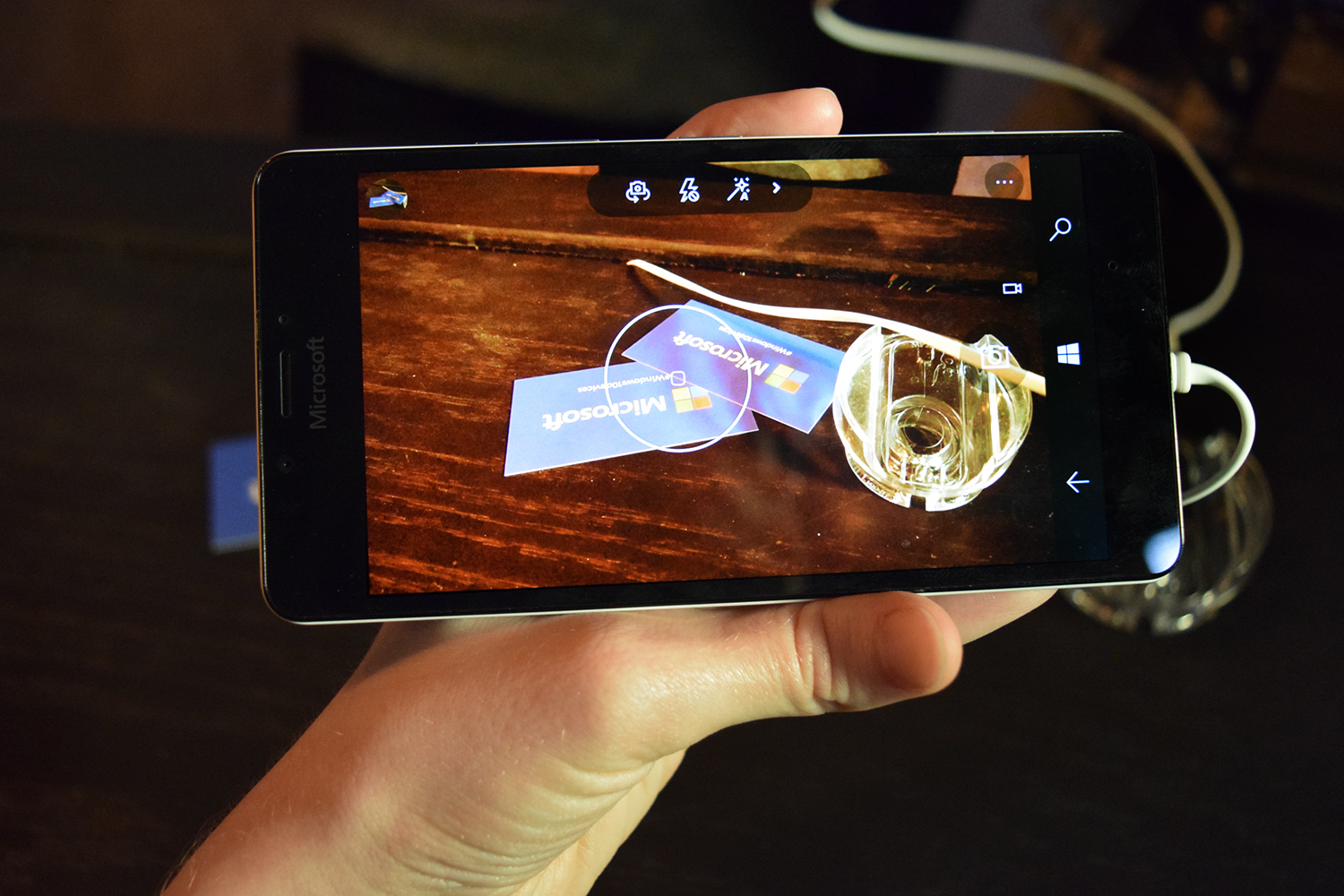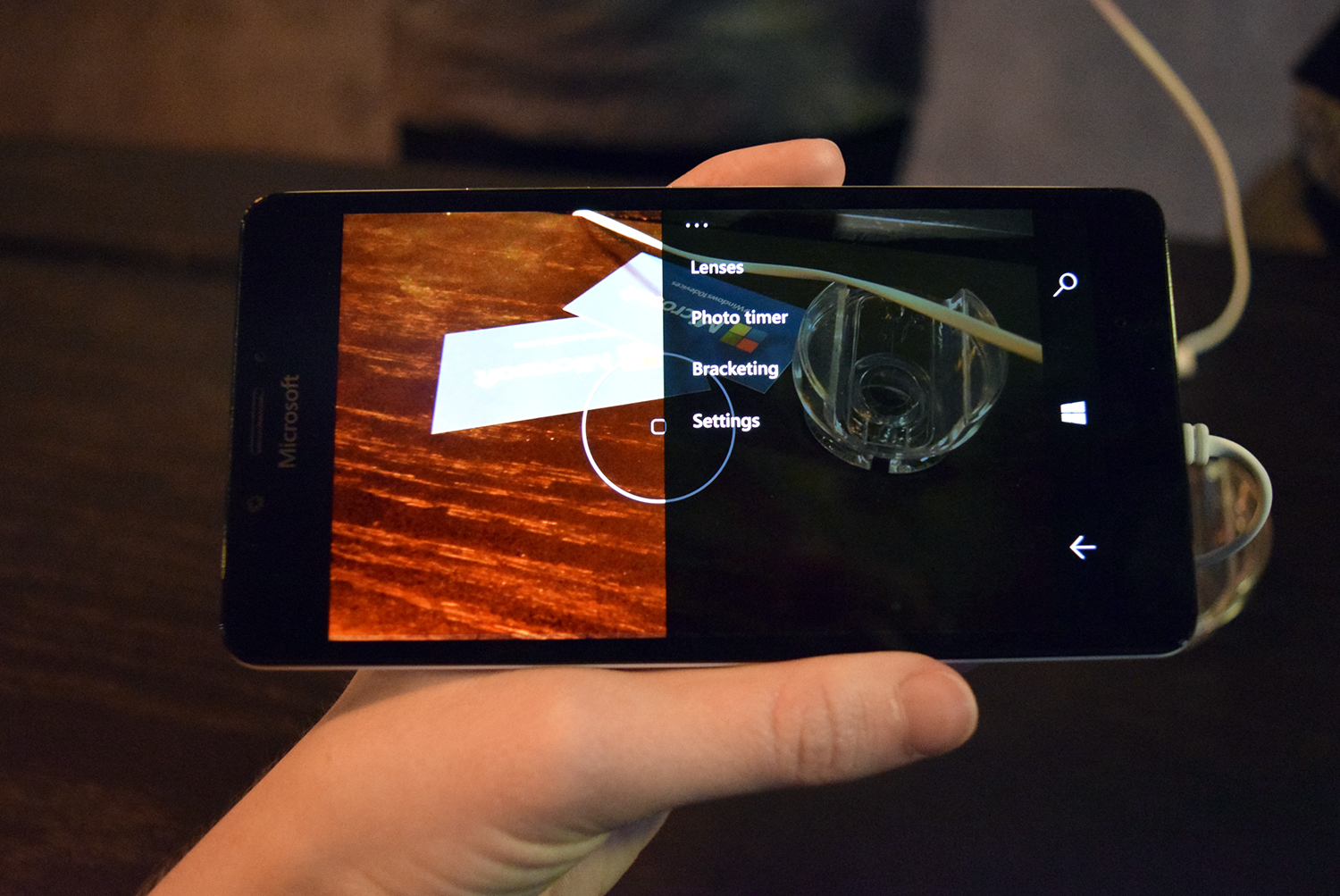Microsoft’s Lumia 950 and 950XL match flagship Android phones spec for spec, but Windows 10 Mobile may be too little, too late.
It’s been a long time since Microsoft unveiled a flagship Windows Phone. The wait is over.
The Lumia 950 and 950XL sport true flagship specs, killer cameras, and Windows 10. These two Lumias are the first phones from Microsoft to run the latest version of Windows, even though the new OS has been spinning on many laptops and PCs for a while now.
The question isn’t whether the new phones are any good — of course they are. There’s a far more interesting question to consider here: Can Microsoft’s Lumia 950 and 950XL convince Android and iPhone users to switch over? We went hands on with the new phones briefly to find out just how good they are.
Classic in plastic
When Microsoft bought out Nokia to start selling phones under its own brand name, the company didn’t really rock the boat style-wise. The Lumia 950 and 950XL are more of the same with their matte, plastic bodies. At the event, we saw black and white versions of the new Lumias, which looked simple and elegant. Lumia smartphones are classically Scandinavian in style, and you’ll either love them or hate them. The plastic back is sturdy and seamless, but it does pop off so you can change the battery if need be.
Lumia smartphones are classically Scandinavian in style, and you’ll either love them or hate them.
The new Lumias are slim and light to handle, and although the Lumia 950XL sports a whopping 5.7-inch screen, you’d never guess it was that big when you hold it. Both are quite comfortable to hold, and they’re not slippery the way some glass and metal phones are. Microsoft went for matte plastic, too, so fingerprints won’t be an issue. We wish more phones were so adept at staving off fingerprints. there’s also a dedicated camera button, which is something that’s been on most Lumia phones and some Android phones.
So far, we’re not seeing bright-colored versions of these flagship Windows Phones, which is a bit of a bummer. Microsoft’s specs sheets do hint that other color options may exist, however — maybe won’t be able to buy them Stateside. Who knows? Maybe carriers will announce their own colors.
Finally, a high-spec Windows Phone!
Microsoft released scores of mid-range Windows Phones in 2015, but not one true flagship. The Lumia 950 and 950XL attempt to fill the shoes of other great Lumias like the Nokia 1020 and 1520, and they aim to compete with the best that Android and iPhone have to offer. Indeed, the spec sheet reads about the same as any
The Lumia 950 and 950XL both sport Quad HD screens with resolutions of 2,560 × 1,440 pixels, though the 950 sports a smaller, 5.2-inch screen and the XL a 5.7-inch screen. The screens appeared bright and luminous, and with Windows 10 gracing the screens, the Lumia 950 and 950XL looked positively radiant. Although most high-end Android phones have Quad HD screens, the two Lumias are more high-res than the iPhone 6S and 6S Plus, and that’s nothing to sneeze at. There’s also 32GB of storage to start and it’s expandable via a MicroSD card.
RAM was not mentioned, but the two phones seemed fast, likely due to the Qualcomm Snapdragon 810 (950XL) and Snapdragon 808 (950) processors powering them. These are the same processors you’ll find in the Moto X Style, LG G4, OnePlus 2, and more, so the new Lumias are just as powerful as your leading Android flagship. Microsoft would argue that its phones are even more powerful, thanks to Windows 10 and the cool Continuum feature, which allows your phone to power any monitor as if it were a full PC, while leaving your phone fully independent and operable.
It’s arguable whether being able to turn your phone into a PC is actually something you’d want to do, but in emerging markets where most people have only one device, it could be very useful to have a full-powered Windows machine in your pocket. We’ll need to fully test out the Lumia 950 and XL before we make a firm judgement on that front.
As for the battery, the smaller 950 sports a 3,000mAh pack and the Xl has a 3,340mAh battery inside. Both support fast charging via USB Type-C or wireless charging, if you’re into that.
Crazy detail from a smartphone camera
Windows Phone built its reputation for making amazing smartphone cameras with the Nokia’s Lumia 1020. Following in that tradition two years later, the Lumia 950 and XL have killer cameras that produce images with absurd amounts of detail. When you zoom into a photo taken with the 950’s PureView camera — 20-megapixel sensor, Zeiss optics, OIS, and triple LED natural flash –you can see every pore, every individual eyebrow hair, and even stubble in high quality.
No other smartphone camera captures this level of detail. You may not be able to tell the difference when you look at an image without zooming in, but as soon as you start to hunt for specific details more clearly, you’ll understand what I mean. The image quality is just different. Microsoft told me this has to do with a combination of things: Obviously the sensor is important, but so is the camera software.
The Lumia 950 and XL understand what kind of picture you’re taking, and the phones react to your environment and the subject. So if the light is good, but your subject is a boisterous child in a ball pit, the Lumia will adjust its own shutter speed, ISO, and so on to capture the shot you need without that characteristic motion blur. There’s no need to adjust settings and fiddle around with manual mode, either. The phones just figure it out for you. Take the magician who was on site manipulating cards quickly in his hands. The Lumia 950 didn’t miss a beat — it caught the shot, and there was no blur.
No other smartphone camera captures this level of detail.
The flash on the Lumia 950 and XL is also pretty neat — it tries to match the tone of your skin to look more natural. Sadly, it doesn’t work on the front camera, so your selfies will still be flash-less, but shots taken with the back cam look more realistic, even in low-light. We saw some sample pictures that looked quite decent, considering the lighting conditions. Of course, all this bears more testing, so we’ll let you know if the 950 lives up to this promise in real-life testing or not.
So far, the camera is the main differentiating feature that makes the Lumia 950 and its big brother interesting, but is it enough to revive Windows Phone?
Conclusion
Sadly, we think not. While Windows Phone has some dedicated fans who really love the platform, and Windows 10 undoubtedly brings some cool cross-device functionality to the Lumia 950 and 950XL, the core problems Windows Phone has always faced still linger. Most new apps won’t ever make it to Windows Phone, and some old apps still aren’t available on the OS. It’s hard to convince Android and iPhone users to switch to Windows Phone after all these years, especially when the specs sheets — and prices — are so very similar.
Is a great camera and the lure of Windows 10 cross-device connectivity enough to justify spending $550 to $650 on a Windows Phone? Probably not, and Microsoft knows it. That’s why Surface announcements were the focus of the show — Microsoft still has a hold on computing, but it came to the game too late to capture the smartphone market. The world’s already divided into Android and iOS users — BlackBerry and Windows Phone are on their way out.
But keep this in mind: The Lumia 950 and 950XL aren’t lousy phones — far from it. In fact, they’re pretty great. But as the saying goes, timing is everything.
Highs
- Flagship specs
- Camera captures amazing detail
- Continuum is cool
Lows
- Windows Phones lack apps
- Android and iOS are more appealing OSes

